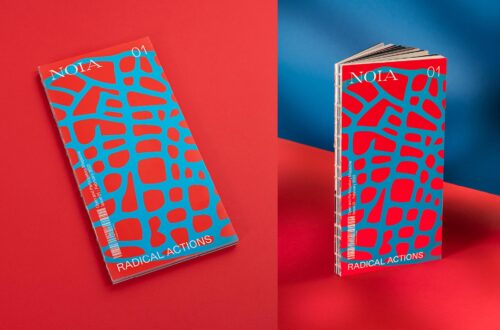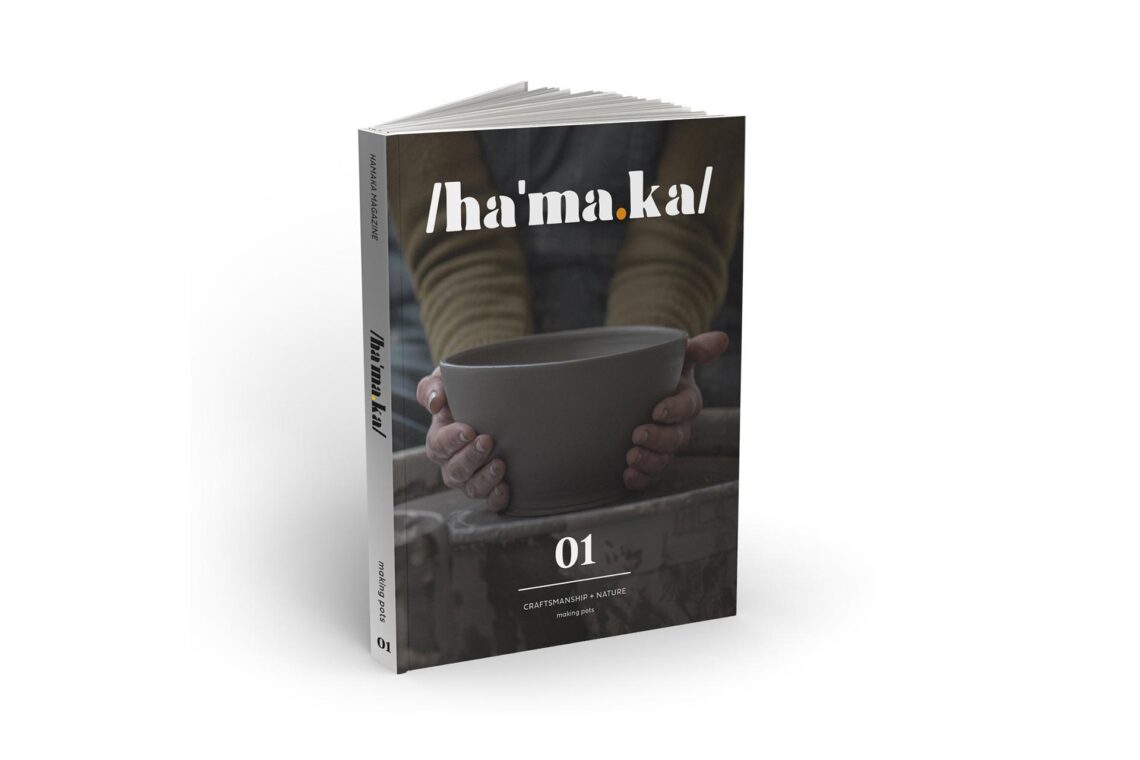
Hamaka magazine issue one introduces us to the human side of pottery
Hamaka magazine is a not-for-profit independent publication originating in British Columbia and printed in Canada on a hundred percent recycled paper in a carbon neutral facility. Pronounced /Ha’ma.ka/, the name is a noun of the native word for “hammock” in the dialect of our Caribbean ancestors. The debut issue of the magazine from Hamaka Creativity Lab sees us dive into the world of ceramics, under the diverse theme of craftsmanship and nature. Heralding its own values of a net zero future, the publication is printed using renewable energy and one percent of its sales are donated to environmental organisations, as noted on the back cover.
With 192 pages to explore within its softcover, the magazine hosts in-depth insights into ceramic makers across Canada. Each maker or set of makers have their own space for their stories to be told, allowing the reader to observe, explore and extract personality from each of the pieces. Written by publisher Alieska Robles under editor Audrey McClellan, the small team have curated each of the stories to hold immersive written text with atmospheric, gritty imagery to accompany. These images elevate the stories to an almost tactile level, from stunning macro material shots to makers-in-action.
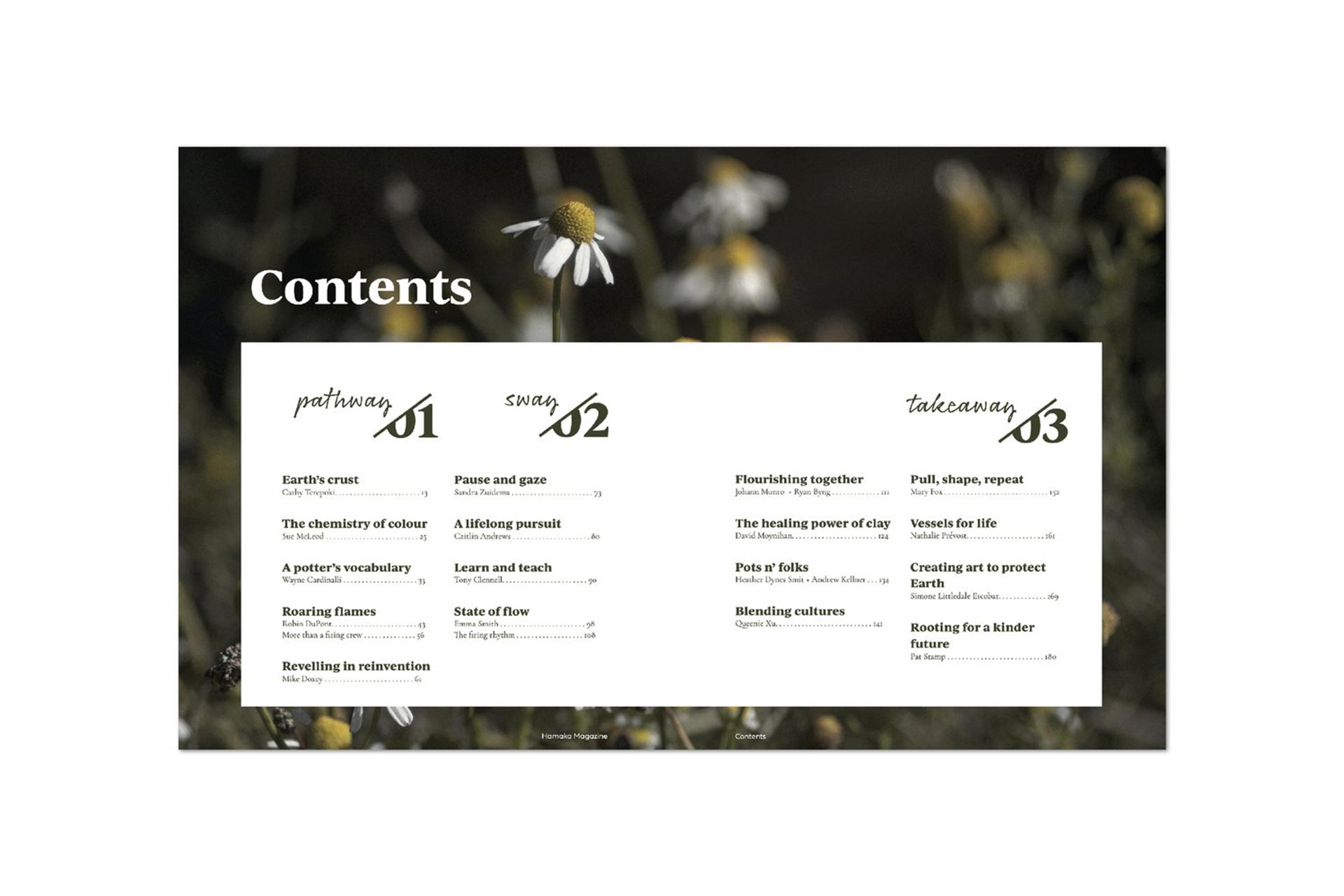
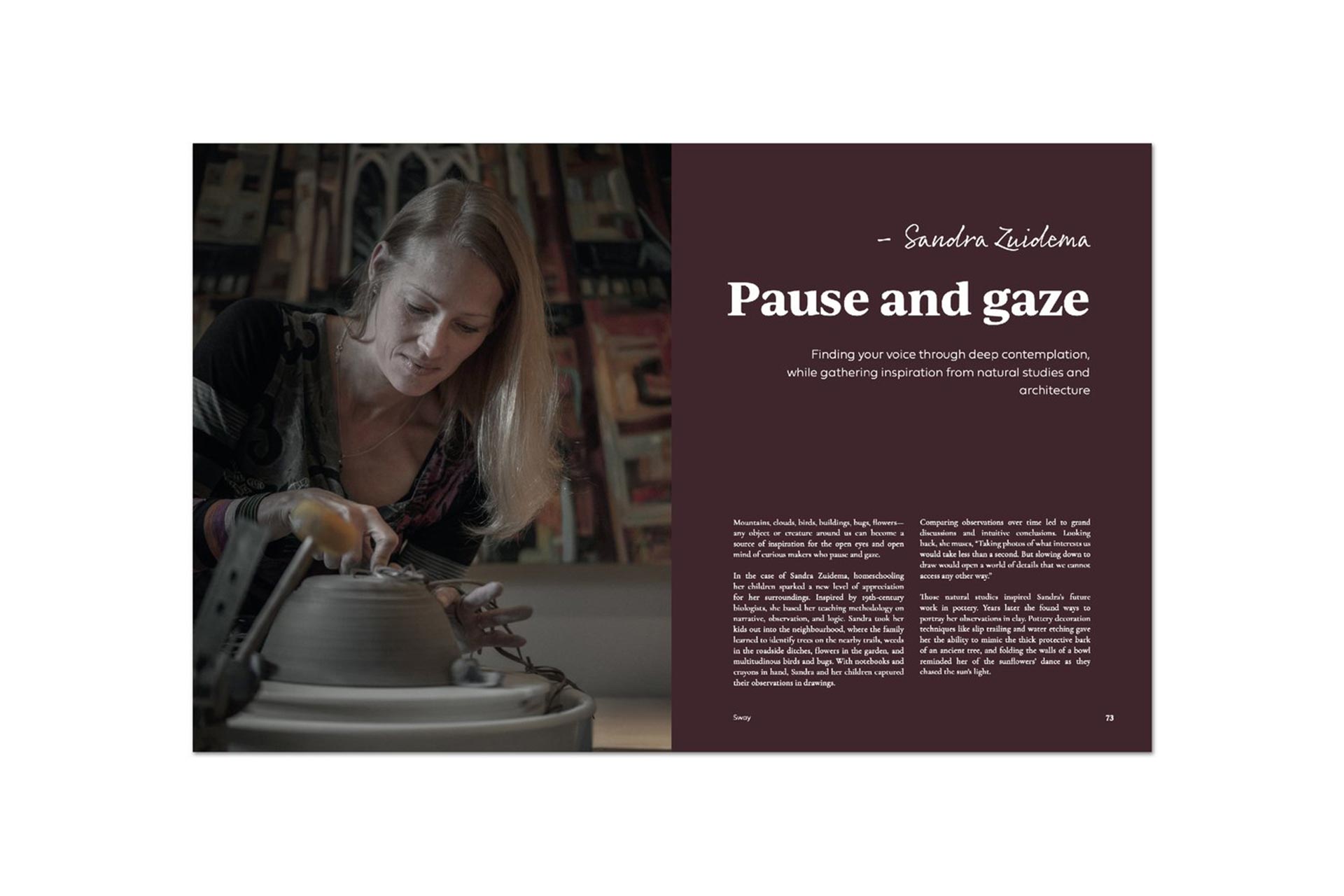
The stories of the makers are the main focus of the magazine, placing the sole focus on them and their practices. However, Hamaka is also educational and provides contextual information and real-world facts to accompany the pieces. It’s enlightening and also helps us understand how the past has influenced our present, but will ultimately mold our future. From start to finish, we explore everything from the Earth’s very beginnings, the birth of language to Japan and China’s important ceramic heritage. Forming an overall picture of Canada’s influence in the ceramic arts, we read interviews with experienced potters who have evolved into teachers, passing on knowledge to new generations of budding clay enthusiasts.
We’re introduced to human stories, peering into the creative and personal lives of the makers. Some of them are sole makers but we also meet joint ventures, sharing lives with others who work towards the same mission – building and nurturing a creative life. This creative life underpins each of them, but reaching this end goal is rarely easy, as is noted in many of the pieces. Individualism is celebrated in Hamaka, with pull quotes and in-depth background writing for each person featured. As the issue focuses on the making of pots in ceramic practices, the background information helps us understand how the makers decided to start making – their influences and their passions.
"The importance of natural living and giving back to the planet is an important value for a lot of the potters featured. The introduction of David Moynihan’s piece on page 124 dives into the effect of social media on our brains, and our need to go back to our handmade roots."
Stuart Williams, Owner of Overleaf
Early in the magazine we meet Wayne Cardinalli, an experienced potter with over five decades of working behind the wheel. We hear about his family and his first interaction with clay, but we also discover a moment in time where Wayne’s studio burnt to the ground due to the kiln’s failed off switch. With his primary source of income gone overnight, we follow Wayne’s journey of re-building. But it’s Wayne’s insight into custom tool making that has cemented a legacy and personal style that has given direction to his work. Others such as Robin DuPont hold a collection of kilns, each individually named, and the piece dives into the pros and cons of the types of kilns. “Electricity allows easy and predictable temperature control, so he doesn’t find it as thrilling as using a flame for the final firing,” the piece says. The physicality of firing is explained in parallel with Robin’s isolated creative process. “He requires alone time and deep self-reflection to conceptualize ideas and express them in subjective art forms.”
There’s little doubt that pottery can be a lonely process, but in stories such as Robin’s partner Eden’s own piece they note that wood firing specifically is “in fact an incredibly communal vocation”, relying heavily on “shared knowledge that is imparted through group firings and apprenticeship-type learning opportunities. Prepping the wood and firing a wood kiln for five days straight necessitates community.” Community is an integral part of the pottery process not only in kiln and final firing. We also learn that community helps foster not only income through a business but also drives the backbone of studios. In the larger piece ‘Flourishing together’ we meet the small family (with a lovable dog) of Johann Munro and Ryan Byng, owners of Shed Gallery. The home-shop-studio offers their pottery at “fair prices so they don’t have to underprice their work and break their bodies to make ends meet.” Described as a “sanctuary for ourselves and our animals”, the couple have adopted animals to provide them with a “loving home that gives them the freedom to live naturally and harmoniously.”
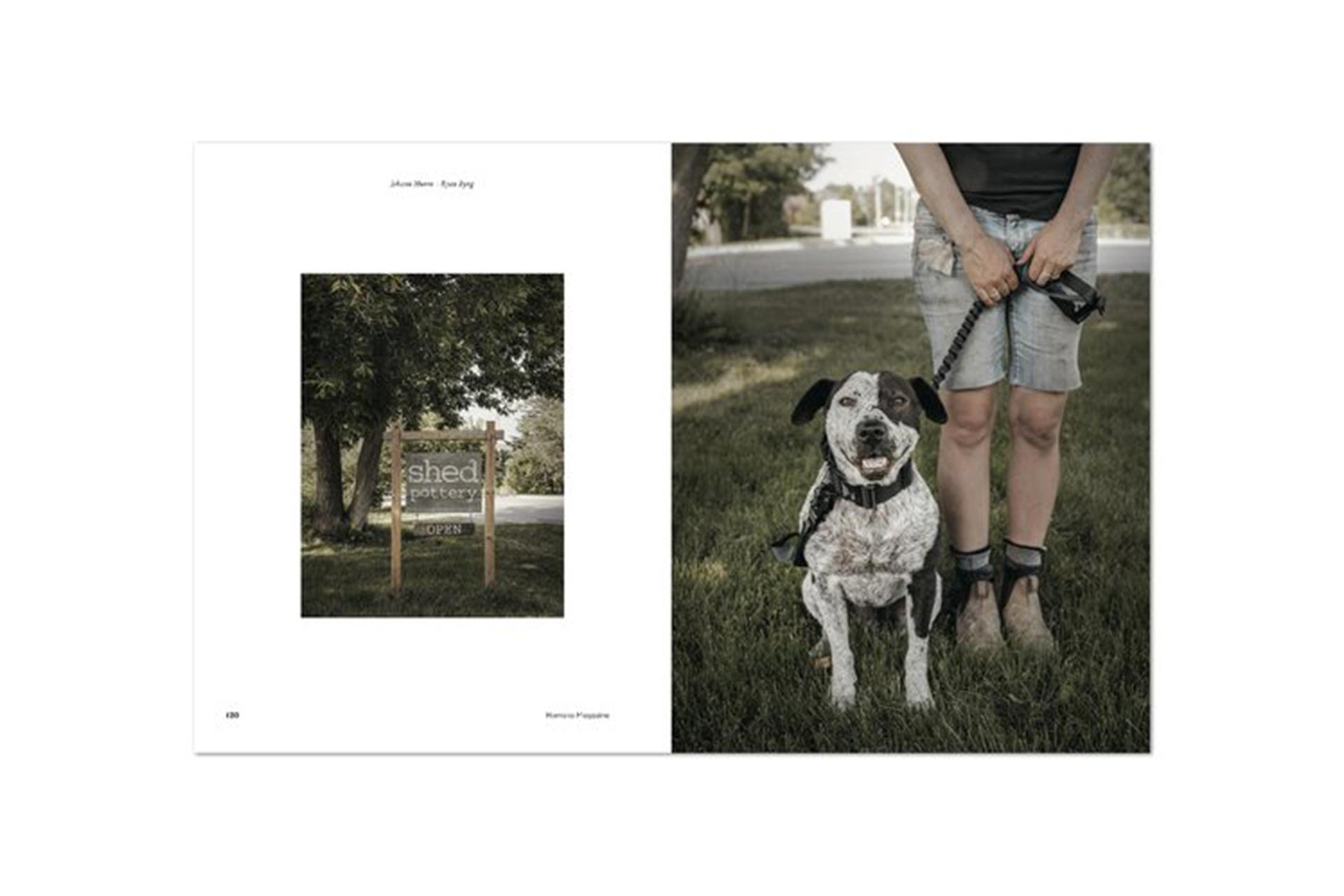
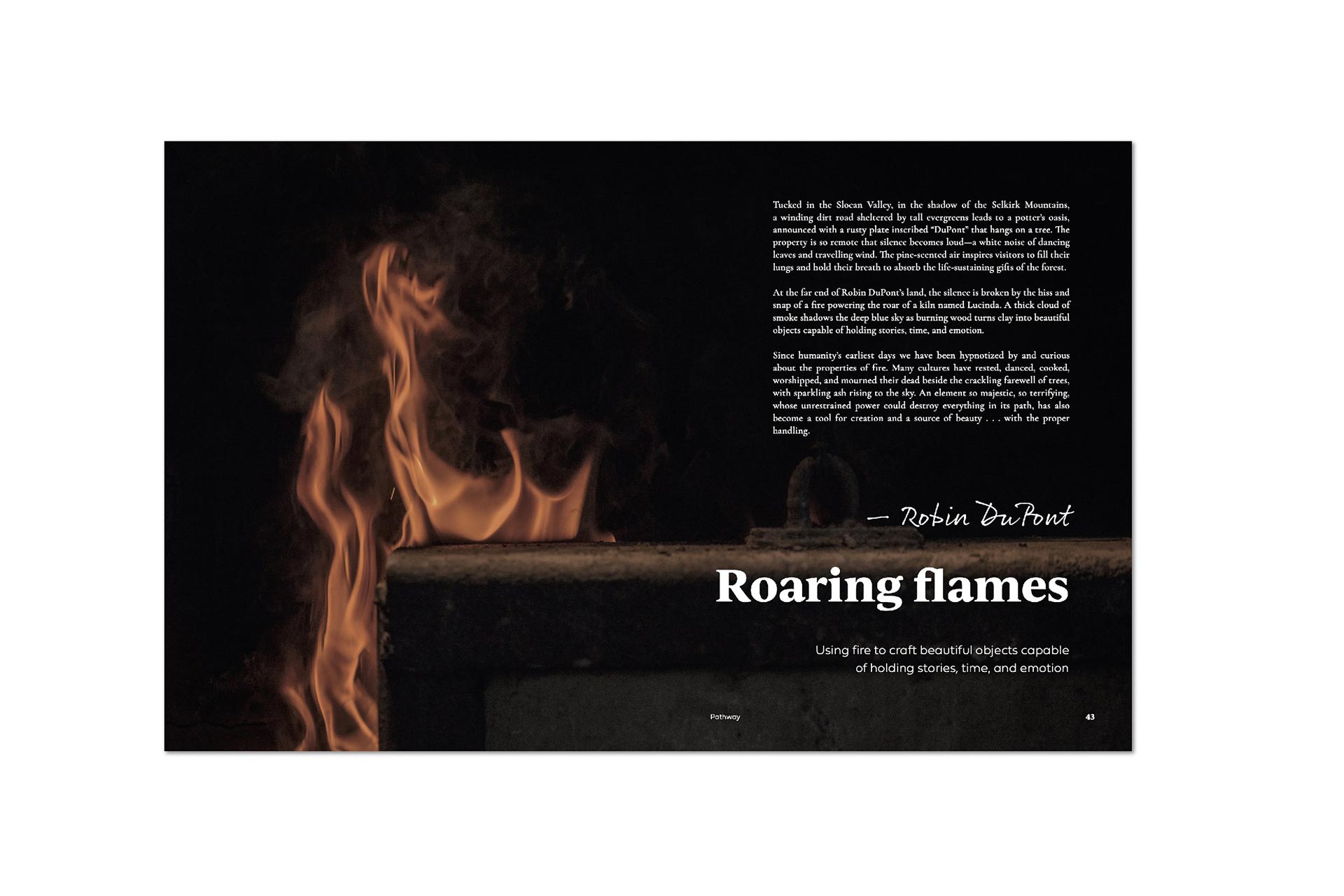
Overleaf email newsletter - subscribe for free today!
Get indie magazine news, reviews and events direct to your inbox! Simply sign up below and you’ll be the first to hear about new articles, podcast episodes and loads more.
The importance of natural living and giving back to the planet is an important value for a lot of the potters featured. The introduction of David Moynihan’s piece on page 124 dives into the effect of social media on our brains, and our need to go back to our handmade roots. “Any form of creation helps combat modern depression linked to our isolating, digitally centred lives,” Hamaka wrote. “Technology’s blessings are immeasurable, but sitting for hours in front of screens deprives many people of tactile experiences, movement, and in-person social interactions, which can lead to mental health concerns.” Within David’s piece we learn of some of the traumatic events that have helped shape him as a person. Starting Cottage Pottery Studio with all his savings from teaching, he continues to develop his creative practice, but notes that “David’s pots are not his work. His real job is creating an environment for people to experience what it means to be human.”
The technical side of pottery opens up a huge educational step for ceramic artists, many choosing to venture into school courses to learn the in’s and out’s. Glazing is a large focus in Sue McLeod’s piece ‘The chemistry of colour’ – venturing into their highly organised studio focusing on the study of colour, glazes and techniques, amongst others. “This is the happy place where Sue spends her days testing the limits of her materials through systematic trial and error, as the first potters used to do.” The piece details the complex world of glazing and the need to research and test different outcomes. “The setbacks motivated her to continue exploring the limits of her materials, and the quest for beauty drives her to keep showing up in her studio, regardless of failed attempts.” This perseverance is evident across all of the stories featured in Hamaka’s debut issue. There’s no coincidence that apprenticeships and the student and teacher dynamic offers great insight into the workings of complex processes – the “been there, done that” mentality.
We meet many teachers across the course of the magazine, offering guiding voices to communities across schools in Canada. “Potters are generous with their knowledge, resources and time and genuine in their collaborations – turning a somewhat lonely practice into a medium for crafting unbreakable bonds, where colleagues become intimate friends and family,” Hamaka wrote on page 139. Mary Fox in one of the closing pieces noted openly that “failure is inevitable on the path to mastery,” an important take on pottery but can also be applied to creative practices as a whole. The human aspect of pottery is the community it fosters and the dedication involved to learning the craft. Neither success or failure is possible without passion for the craft, which each of the makers featured in Hamaka magazine have in abundance. By locking into their overarching passion and understanding their past experiences, we can see the individual paths emerge, and not one person has the same path. This is how Hamaka shines – the individuality and balanced perspective across the medium helps us understand the nuances of the craft and may fire a passion in others to start learning pottery.
Where to buy
Here are the stockist websites for this magazine title. These may include social media links only.
Hamaka – Official Website
Hamaka – Official Shop
Correct at time of writing.
Sponsor this article
Advertise your goods or shop here! Contact Overleaf via overleafpodcast@gmail.com with the subject line ‘Article Sponsorship’ to find out more.
Enjoying Overleaf?


You May Also Like

Letters to Lovers zine issue two invites us into the complex world of human emotions
November 27, 2023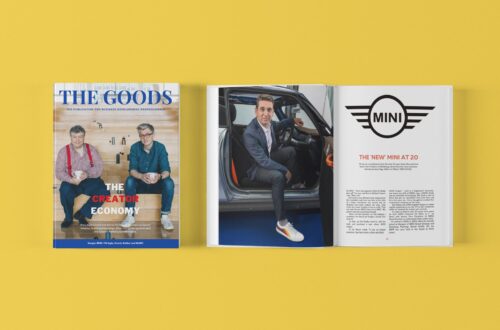
The Goods issue five ignites the global business community and coffee lovers alike
October 5, 2022